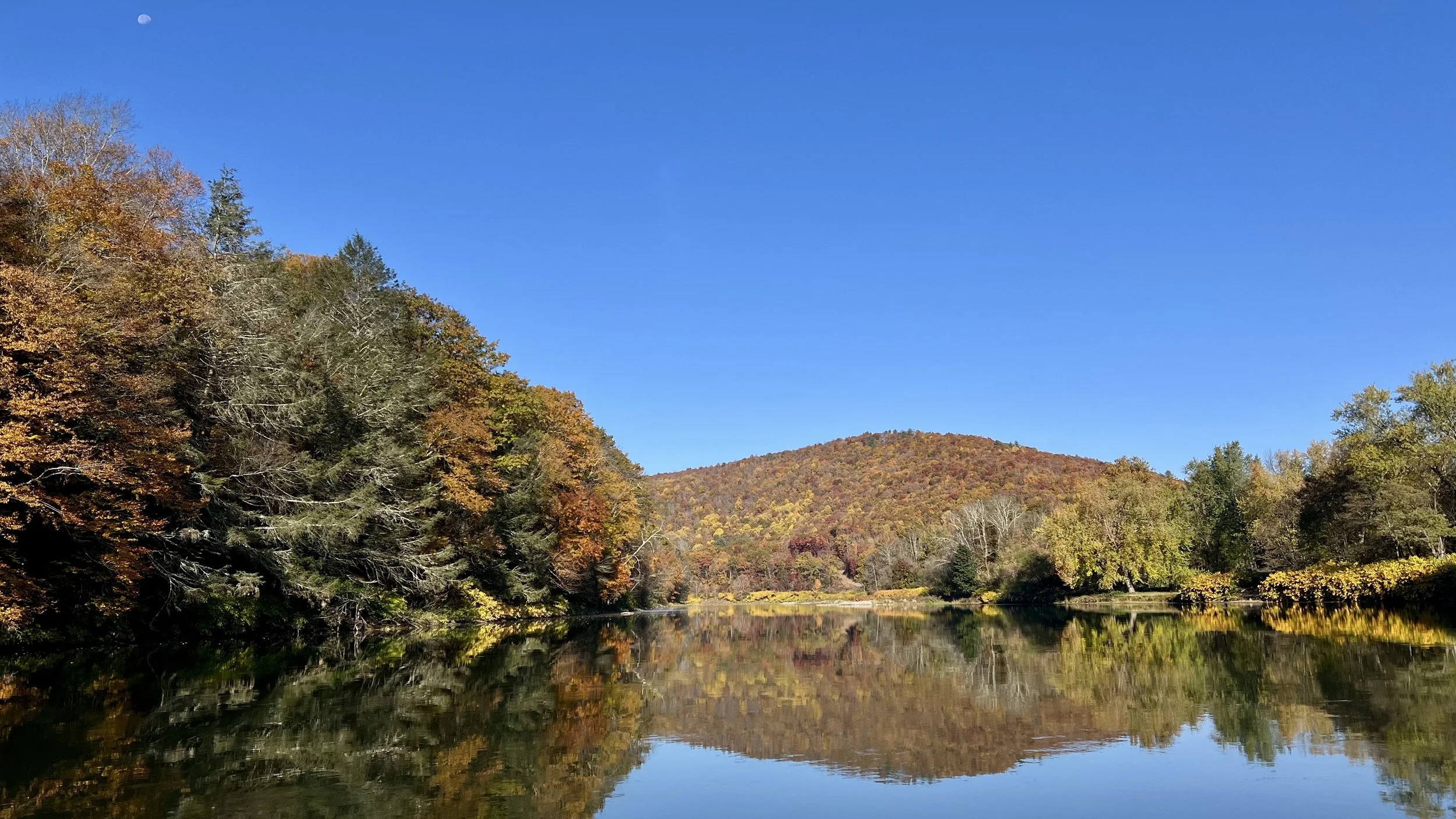Year-Round Angling on the UDR Tailwaters
In 2020, the New York State Department of Environmental Conservation (DEC) adopted its first ever statewide trout river management plan. This was a very positive and laudable step forward in protecting the state’s trout rivers. The plan focuses on long term conservation goals including enhanced biological monitoring and habitat protection.
One regulatory change in the state plan that caught the attention of many UDR tailwaters anglers was a new year-round angling season established for almost all the state’s trout rivers including the Upper Delaware system.
For most of the UDR tailwaters system, the angling season historically ended on October 15 and resumed in early April. While we understand an approach that expands public angling opportunities, the UDR conservation and angling community were very concerned about the potential impacts of year-round fishing, especially the disturbance of spawning beds (aka “redds”) during the sensitive brown and brook trout spawning period in the fall.
Many comments from the UDR conservation and angling community were submitted on the plan expressing concern and opposition to the proposed year-round season as the plan was nearing the finish line.
The DEC thoughtfully considered these comments but ultimately decided not to remove the expanded angling season created by the plan citing an absence of data indicating potential threats and the broader societal and cultural benefits of increased public angling opportunities.
Despite this decision, our comments helped persuade the DEC to dedicate resources to monitor the impacts of year-round angling in the 9 “Wild Premier” rivers across the state that were created by the plan which included the UDR tailwaters system. The agency designed a monitoring approach in stretches of the UDR tailwaters that are known to host significant wild trout spawning activity and are popular among UDR anglers. Evaluative metrics included the robustness of “Young of the Year” wild trout populations and regular visual inspections of angler activity.
The results? With caution, we can report so far, so good. The results of the initial 3-year monitoring study indicate that increased angling pressure is not occurring at alarming levels during the extended season and that wild trout populations are not experiencing biological threats in the UDR tailwaters.
The results of the impact study are great news, but ongoing agency monitoring and cautious angler behavior is paramount. FUDR, TU, and our conservation partners are working to assure continued minimal impacts from year-round angling. We are interested in identifying and securing new resources to enhance the robustness of the ongoing agency UDR monitoring efforts and on angler education about the sensitivity of fishing the UDR tailwaters during wild trout spawning periods.
Some things to consider as a UDR tailwater angler:
Give Trout the Space to Thrive
At Friends of the Upper Delaware River, we encourage anglers to give wild trout a break so they can complete their life cycle and ensure strong, healthy populations for years to come.
During spawning seasons, you can make a real difference by choosing where and how you fish:
Fish stocked streams and lakes. These waters offer excellent opportunities year-round without impacting wild spawning trout. You’ll still enjoy great fishing while supporting sustainable management practices.
Target deeper runs and pools. Focus your time where trout are holding outside of spawning areas.
Respect spawning activity. When you see trout paired up or behaving differently in shallow gravel, give them plenty of space to complete their work undisturbed.
Share what you see. Report spawning observations to FUDR — your insights strengthen conservation data and support DEC monitoring.
Be a river steward. Most UDR anglers already take care to avoid sensitive areas during spawning season — a proud tradition that helps keep this fishery among the best in the East.
By focusing your fishing on stocked waters and stable holding areas, you help protect the next generation of wild trout — ensuring that the Upper Delaware River continues to thrive for everyone who loves it.
For the River,
Jeff

